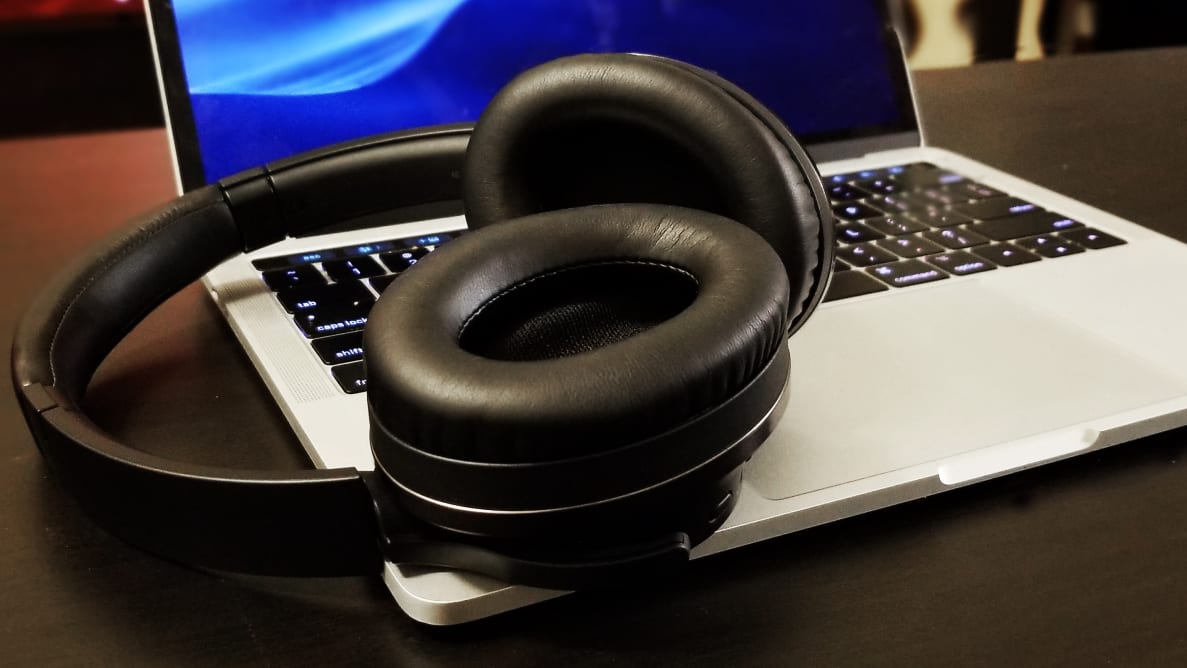Pros
-
Great sound
-
Amazing battery life
-
Easy setup
Cons
-
A bit heavy
-
Some BT issues
-
No customization
There's a big market out there for wireless, noise-canceling-equipped over-ear headphones for around $300. Take a look at the new Bose NC 700s or even newer Sony WH-1000XM3 headphones, among countless others, and you'll notice there's a definite pattern towards high-quality noise canceling cans in that particular price range—they would seem to be a feather in the cap of many standout manufacturers.
Audio Technica's iteration comes in the form of the ATH-ANC900BT, which debuted during CES 2019 and hit the market in February. Since then, headphone buyers in the market for a set of premium ANC-equipped over-ears have primarily weighed options between Sony, Bose, and these AT cans, to name a few. And while this review is coming along fairly late, it does come equipped with the advantage of having checked out some of the competition in advance of the ATH-ANC900BT, allowing us to evaluate them with adept knowledge of what their direct competitors are capable of.
With every product being a bit of a balancing act, I can see plenty of reasons why people might go for the simpler and slightly more affordable ANC900BT's over something like Sony's WH-1000XM3's. With less tech overall, the 900BT's battery lasts at least 10-12 hours longer than most of the competition on average, and some buyers may even prefer the marked lack of filigree here (there's no app to download, no EQ to mess around with, no AR features or anything like that). At $300 or less online, the 900BT's aren't the most premium choice out there, but they should be on your radar if you want frills-free ANC headphones.
About the Audio Technica ATH-ANC900BT
The 900BT (technically Audio Technica ATH-ANC900BT QuietPoint—what a mouthful) is Audio Technica's 2019 entry into the premium noise-canceling over ear space.
These headphones hit the market in February of 2019, and here's what you should know about 'em:
Price: $300 (MSRP) Style: Over-ear Noise-canceling: Yes (ANC) Battery Life: 35 hours (with BT and ANC active, claimed) Cable: ~4 feet 2.5/3.5, detachable Driver diameter: 40mm Frequency range: 5 Hz–40 kHz Accessories: Detachable cable, USB charging cable, airplane adapter, carrying case
One of the physical differences between the 900BT and something like Sony's WH-1000XM3 is that the 900BT includes a cable for passive (wired) listening, something I wish that Sony included with the 1000XM3.
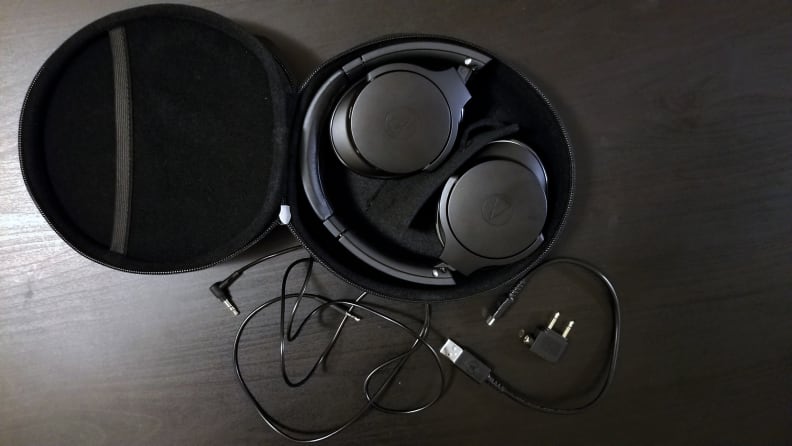
When you buy the Audio Technica ATH-ANC900BT, you get a zip-up carrying case, an airplane adapter, a USB charging cable, and a 3.5mm cable for passive listening.
As stated above, you're also getting the usual firm zip-up carrying case, a rather short USB charging cable, and an airplane adapter. One nice little feature in the carrying case is that it features an illustration of how to place the headphones properly into the case (something I definitely appreciate after struggling for a bit with the 1000XM3s).
We received our ATH-ANC900BT headphones on loan from Audio Technica, brand new in the original packaging.
What We Like
These check off a lot of boxes where comfort is concerned
While it's not a hard and fast rule, generally, we find that over-ear headphones tend to be the most comfortable, at least in the short-term. Big plush cups and padded headbands are generally easier on your dome than more clamp-prone on-ear styles, and obviously don't have the potential to irritate or fall out as much as in-ear or ear bud style headphones.
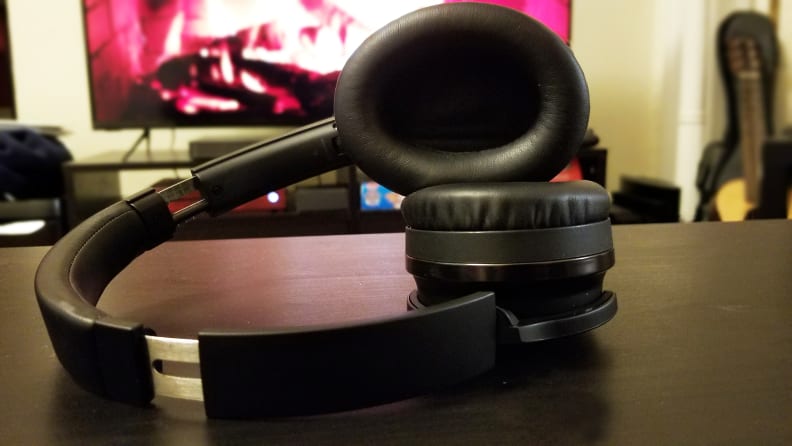
Overall, the 900BT are fairly comfortable, though after a few hours of use their weight may start to become noticeable for some users.
And as these things go, the 900BT's are pretty comfy. I wore them for a good portion of the day yesterday and have been wearing them all this morning while working. While they're not quite as plushy and velvety as what I've sampled from Sony and Bose this year, they're a long shot from uncomfortable. Even in Philadelphia's endless hot weather, there's not much heat build up, though they feel a bit heavier on my head than I'd prefer.
Where flexibility goes (cup arm extension, ear cup rotation, etc.), the 900BTs are about on-par with other headphones in this price range. When they're around your neck, they'll rotate down so that the front of the cups rest against your shoulders/chest; they also collapse up into the band, something neither the Bose NC700s or Sony WH-1000XM3s do.
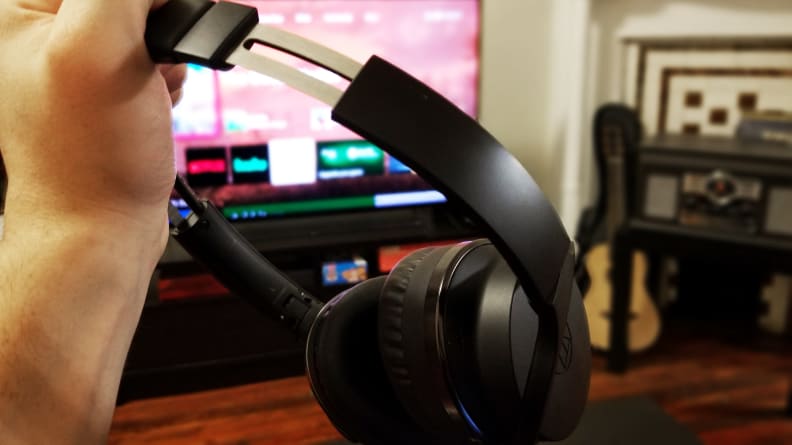
The 900BT's band extends enough on both size to accommodate the largest heads, and their clamp force creates a good seal without being overly tight.
After a few hours, my only complaint about the 900BT is that they're a bit heavier than I'd like. It's easy to chalk the weight up to something like the size of the drivers or the amount of tech stuffed into each cup (such as modules for Bluetooth or microphones for voice calls/active noise canceling), but Sony's XM-1000XM3's were light enough for me to forget they were even on my head, and they feature the same tech.
Great sound, but a little inconsistent
In this price range ($300), you have the right to expect any pair of over-ear headphones to sound great, and for the most part the 900BTs do. Like many over-ear models, they seal well around your ears, locking in the full range of more-difficult-to-produce frequencies like sub-bass, bass, and lower-midtones. As it stands, they sound very good.
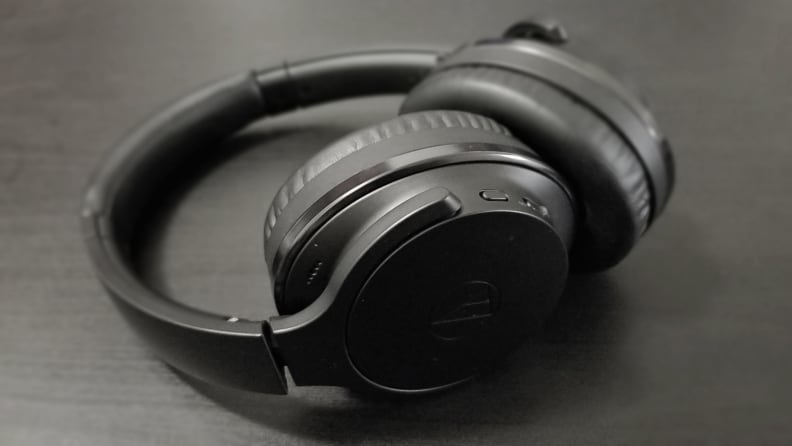
Generally, the 900BT's sound robust and consistent, though you won't find any EQ adjustment here. They sound a bit flatter when listened to through the included 3.5mm cable.
The 900BTs deliver a good consumer-facing sound, but without an app or any EQ customization, there's no way to tailor it further to your liking. Even still, I've been a huge fan of Audio Technica's ATH-M20x and M50x headphones for years, and how these sound (with BT/ANC enabled) is right up my alley. However, they're a bit beefier on the bass/lower-midrange than some purists may prefer, but not quite as bass-forward as many consumer-facing headphones in the market these days, so the overall sound may have a more niche appeal. I think of it as business casual.
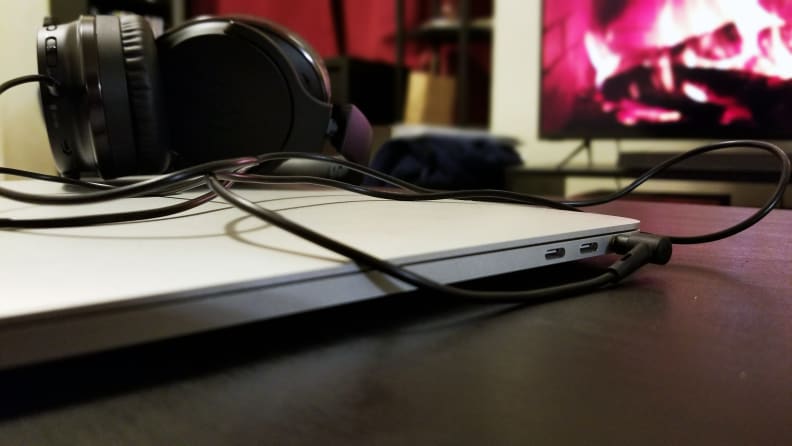
The 900BT include a 3.5mm wired cable to allow you to use them in a non-wireless mode, though they don't sound quite as robust when used this way.
The inconsistency I've noticed has to do with when the headphones are plugged in, in passive mode. They sound fairly excellent in their normal course of use (with wireless Bluetooth/noise canceling active), but when switched "off" and in passive mode, the sound is a bit dull and flat by comparison. While it's still good enough for occasional listening if the battery's dead (or you don't need wireless/ANC at the time), it's a shame that much of the "liveliness" of the 900BT's sound during normal operation is lost during passive listening.
But overall, these cans do sound great. I listened to a bunch of music on Spotify, both wireless over Bluetooth and wired, and everything sounds full, crisp, and robust (though more in the former mode than the latter). Testing revealed a mostly flat frequency response, and a frequency range that wasn't quite as wide as is advertised (20 Hz–12.5 kHz). Nitty gritty details aside, though, the verdict is that the 900BT's sound mighty good, even if they're not on the level with ultra-premium options.
Battery life that just keeps going and going
I'm willing to forgive the 900BT's their slight heaviness (compared to a couple of their direct competitors, namely the Sony WH-1000XM3 and Bose NC 700) if it's due to having beefier batteries, because the battery life on these is absolutely fantastic. In fact, I'd say it's head-and-shoulders above anything else I've tried this year in this price range, and is perhaps the BT900's best feature.
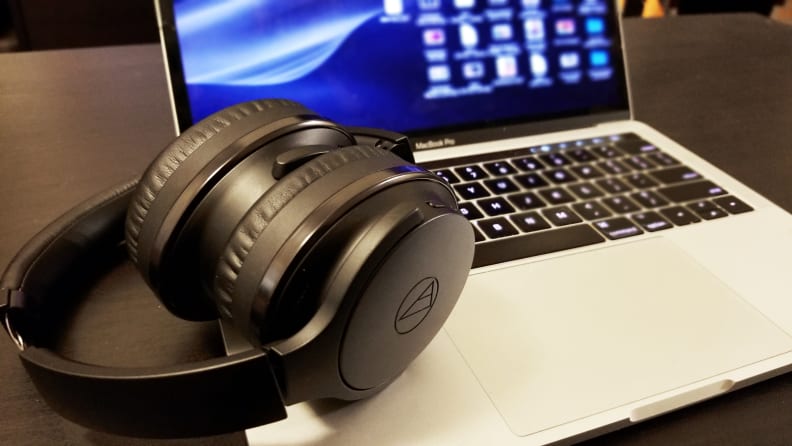
The 900BT's best feature is almost definitely their battery life. During normal wireless use, they lasted upwards of 35 hours.
For comparison's sake, when I tested the WH-1000XM3, I noticed that using them normally (with Bluetooth and ANC), they'd give me about 10 or so hours of battery life, which is honestly a perfectly solid amount of time for headphones like this in 2019. You could use them realistically for an active day of traveling or around the office and charge them overnight, just like a smartphone.
Well, for whatever reason, Audio Technica decided to go super hard on the battery life for these headphones. I've used them for multiple days—yes, days —and they just refuse to quit. The morning of my third day of using the 900BT's, they were still at 100% battery life; they just refuse to quit. AT claims 35 hours of battery life (so about a day and a half) with ANC/BT active and something like 60 hours without ANC. My first thought was that Audio Technica was just inflating its numbers (TV contrast ratios, anyone?), but these numbers seem pretty accurate.
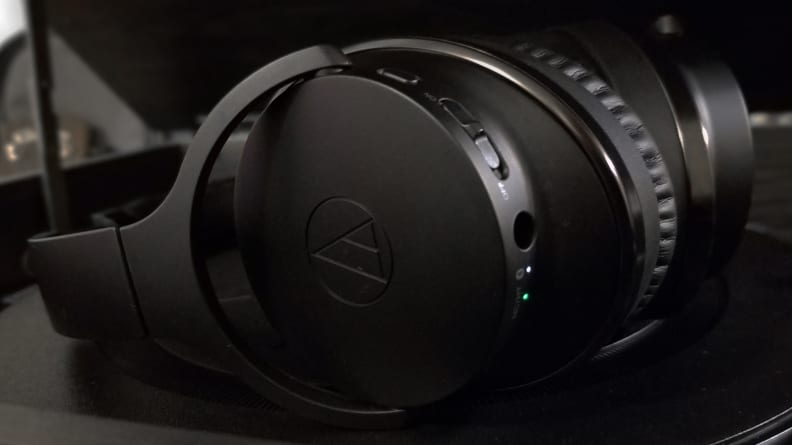
Two small indicator lights show Bluetooth connectivity and overall power status. When the 900BT are switched off, you can still use them in passive mode.
I haven't tested every headphone on the market, but I can say that generally, average battery life for over-ears with this feature set in this price range is (give or take) 20 hours. Considering the 900BT's last for almost twice that long, it's easy to call battery life one of their best features.
Easy-to-use controls
These days, most wireless/Bluetooth headphones feature on-set controls, usually located on the back or edges of one of the ear cups, and the ATH-ANC900BT's are no exception. You'll find a simple control set—volume up on the top part, volume down on the bottom, and play/pause in the middle—on the rear side of the left cup.
Like many ANC headphones in this price range, the buttons are touch-capacitive ones rather than physical, tactile "actual" buttons, but using them is a bit easier than some of the competition (both the Bose NC 700s and Sony WH-1000XM3 have almost invisible button layouts) due to the feedback provided by the Audio Technica logo in the middle of the cup. By contrast, I found it much easier to make adjustments to volume or play/pause music.
Lastly, the "Hear-Through" function (activated by pressing a button on the bottom edge of the left cup) is pretty solid. All it does is lower noise-canceling and use the microphones to slightly amplify noise around you, but it works well. I used the 900BT's on a flight to/from Boston, and used it whenever the crew was making an announcement. While it also amplified all the ambient plane noises, it worked as advertised, and was better than having to take the headphones off every time I needed to hear what was going on around me.
What We Don't Like
A little too heavy for long-term comfort
In a way, it's a shame that you could use the 900BT's in all their wireless, noise-canceling glory for some 30+ hours without charging them, because you might not want to. While I'm not calling these headphones uncomfortable by any means, the extra weight (compared to some of the competition, anyway) is definitely noticeable once you've been wearing the 900BT's for 20 minutes or so.

Pictured: trying to come to grips with wishing these were just a little bit lighter.
I've used lots of headphones—lots of Audio Technica headphones especially, including the ATH-M20X, ATH-M50X, and ATH-700X—and generally their weights and level of comfort are perfectly adequate, though it's true that none of those are wireless, either, and don't need in-housing batteries to function. I'm fairly certain that the 900BT's extra weight are due to its hefty batteries, which given the very long battery life seems like a fair enough trade, but it would still be nice if they were a bit lighter.
Not much by way of customization
I loved the Sony WH-1000XM3, but I also recognized that they had a bit of a learning curve: a very involved app that did everything from custom EQ adjustments to using microphones to analyze your surroundings, and adjust noise-canceling for things like external air pressure. Maybe too fancy for some, the WH-1000XM3 are high-tech in the way that Sony is somewhat famous for.
By means of comparison, the ATH-ANC900BT's don't utilize any app, have no EQ adjustments at all, and in fact don't even have adjustable noise-cancelation—just a feature called "Hear-Through," which allows you to hear what's going on around you by reversing the ANC process (to a degree). While I actually like the dressed-down feeling of simplicity here, you're paying a lot of money for a product that's basically "as-is" out of the box, too.
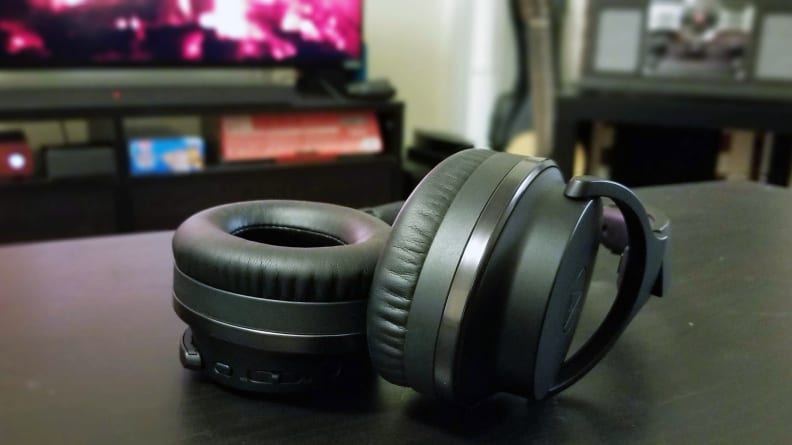
With the 900BT, what you see is what you get. There's no app for EQ or ANC customization, and a simple set of buttons on the left cup.
Bluetooth consistency can be finicky
I've noticed this with plenty of Bluetooth headphones, but it was a bit surprising that, in this price range, the Bluetooth occasionally skipped, stuttered, or disconnected. And I'm not talking about when I get too far away from my phone or laptop, but something as simple as pulling my phone in or out of my pocket while walking around with the ANC900BT's.
The Bluetooth issues didn't happen often, of course, but it happened enough for me to notice it during use, which is more often than I found with other ANC headphones in this price range. It's possible it has to do with my phone (Galaxy S8), but considering I've connected it to dozens of Bluetooth speakers and headphones without issue, it seems like something on the headphones' end.
Noise-cancelation could be a little better
I'm not saying that the 900BT's don't offer up pretty good noise-canceling. For the most part, they make short work of the most troublesome kinds of noises—very high-pitched things like the squealing of brakes, or low rumbling airplane engines—but I also noticed that they didn't cut as much mid-frequency volume as some of the others in this price range that I used.
While that is likely because they are not "adaptive"—they use a base-level of cancellation that cannot be adjusted, nor adjusts to what is happening around you—it's worth pointing out for buyers primarily looking for something that cancels as much noise as possible.
Should You Buy It?
Maybe—if you primarily want fewer frills and massive battery life
The ATH-ANC900BT's have two very strong suits compared to the competition. For one, they're not nearly as complex. You don't need to use an app to set them up, they don't have EQ or adaptive NC options, and they certainly don't attempt to integrate voice assistants like Alexa or Google Home into their operation. Secondly, their battery life is awesome. While it may not be so brawny after a year or two, a fresh pair of these nets you 30-35 hours of battery off of a single charge, which is around 50% more than much of the competition.
However, there are also headphones out there (like the Sony WH-1000XM3) which offer a small suite of improvements for only around $50 more. They're a bit more comfortable in the long-term, and feature many customization options for users looking to take advantage of adaptive noise canceling and EQ customization. They also arguably exhibit a more attractive design, but that's a judgment call for the user.
That said, for around $300, the ATH-ANC900BT's are an excellent pair of over-ear noise-canceling headphones. They sound robust and full, dampen enough noise for the average traveler, and can go for days without needing a charge. The included 3.5mm cable for passive listening and carry case are a nice touch, too. If you primarily want long battery life and don't want to worry about essentially programming your headphones before or during use, pick these cans up.
Meet the testers
Lee was Reviewed's point person for most television and home theater products from 2012 until early 2022. Lee received Level II certification in TV calibration from the Imaging Science Foundation in 2013. As Editor of the Home Theater vertical, Lee oversaw reviews of TVs, monitors, soundbars, and Bluetooth speakers. He also reviewed headphones, and has a background in music performance.
Julia is the Senior Scientist at Reviewed, which means that she oversees (and continually updates) the testing of products in Reviewed's core categories such as televisions, washing machines, refrigerators, and more. She also determines the testing methods and standards for Reviewed's "The Best Right Now" articles.
Checking our work.
Our team is here to help you buy the best stuff and love what you own. Our writers, editors, and experts obsess over the products we cover to make sure you're confident and satisfied. Have a different opinion about something we recommend? Email us and we'll compare notes.
Shoot us an email
